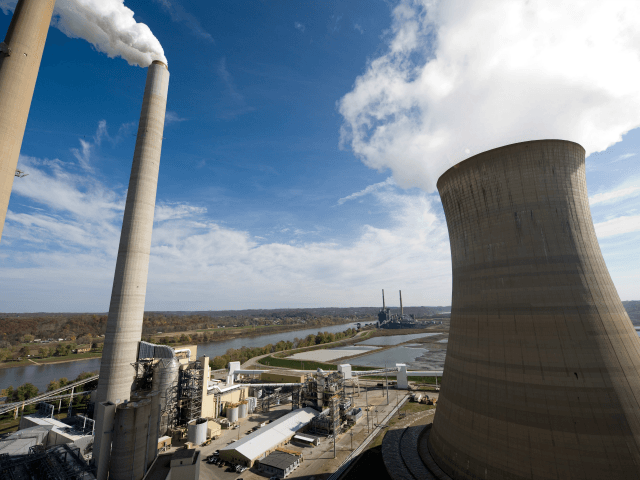China is investing massively in fossil fuel energy – not just at home but across the world, such as this project in the former Yugoslavia.
The Balkan region’s first privately-funded power plant came online on Tuesday, increasing the region’s dependency on coal-fired power stations even as environmental concerns are driving them to the brink of the extinction elsewhere in Europe. It was built by China’s Dongfang Electric Corp and financed with the help of a 350 million euro ($391.13 million) loan from the China Development Bank. Even though the Western Balkans has a power deficit, European investors are reluctant to finance more polluting coal which forms the backbone of supply in the region, attracting Chinese financiers and contractors. Some 2,800 megawatts of extra coal-fired capacity is planned across the region in coming years at a total cost of 4.5 billion euros, most of it financed by China.
No doubt this will come as a terrible shock to all those experts who’ve been assuring us that no one is keener on clean, renewable energy than those caring, eco-friendly Chinese.
Here is one of them – Maria van der Hoeven, head of the International Energy Agency, no less – telling the BBC’s resident green activist Roger Harrabin exactly what he wants to hear in an interview last year in the run up to the Paris climate conference.
Maria van der Hoeven says most people think that China is frantically building coal-fired power stations.
The reality, she says, is that China is spending as much as the US and Europe put together on clean power.
She says its coal-fired power stations are state of the art – and should be copied in other developing countries.
Maria van der Hoeven told BBC News: “People think about China in a way more representative of previous decades.
“They are now the largest wind power market in the world. They have increased their power generation from renewables from really nothing 10 years ago – and now it’s 25%. These are very important signals that China is moving into the right direction.”
Her organisation – the rich countries’ energy think-tank – says in 2014 that China spent more than $80bn in new renewables generating capacity; higher than the EU ($46bn); Japan ($37bn) and the USA ($34bn).
China’s commitment to renewables has benefited the rest of the world by creating a mass market that prompted a 70% reduction in the cost of solar panels in recent years.
If you believe any of this I’ve got an incredible bridge across the Yangtse I’d like to sell you.
As I’ve reported before at Breitbart, China does not give a damn about renewable energy except insofar as it provides an excuse to curry favour with and extract money from all those Gwailo nations gullible enough to buy its wind farm technology. Meanwhile, it is ramping up coal production like global warming never happened. (Which indeed it hasn’t for nearly 20 years).
The only reason China agreed to the COP21 treaty in Paris was because it was non-binding and because, anyway, the agreement included a special clause permitting China – ludicrously classified as a “developing” nation – to put economic growth before environmental considerations.
China’s commitment to renewable energy, however, is likely to be sorely tested by experiences with wind and solar – which mirror those across Europe and the US. Essentially, they only make sense with massive amounts of taxpayer subsidy. When the green bribes run out, the renewables industry collapses.
China is struggling to pay billions of yuan in subsidies to renewable power generators following a rapid expansion of capacity, a planning agency official said this week.
Wind and solar power capacity has grown faster than expected in the last five years because of preferential policies that include higher tariffs paid for cleaner electricity, as the world’s biggest coal consumer tries to encourage alternative forms of energy.
But Zhi Yuqiang, deputy director responsible for price regulation at the National Development and Reform Commission (NDRC), said developers face a possible shortfall of 60 billion yuan ($9 billion) in subsidy payments this year owed to them by the government.
The subsidy gap had already reached around 55 billion yuan by mid-year, he told an industrial conference in Beijing on Tuesday, according to a transcript of his remarks obtained by Reuters.
$9 billion in green subsidies? Even in an economy the size of China’s that is a serious amount of money to spunk up against the wall purely for the purposes of environmental gesture politics.
This could – in turn – have a disastrous knock on effect on the renewables industry in Europe. China has been overproducing its solar panels and, because there has been a fall in demand for solar energy, it is doing what it always does in these situations – dumping its produce on the rest of the world.
A sharp increase in solar power production in China and a sharp fall in domestic demand have sparked a sudden surge of cut-price exports, undermining a China-EU agreement to limit damage to European producers.
China produced 27 gigawatts (GW) of solar photovoltaic (PV) modules in the first half of 2016, an increase of 37.8 percent and installed 20 GW of new solar power capacity in the same period, three times as much as the same period a year ago.
Tragically – truly you’d need a heart of stone not to laugh – this could wreak havoc across the European solar industry.
“We fear a second wave of bankruptcies,” said the head of an association of EU solar producers.
Oh dear, never mind.

COMMENTS
Please let us know if you're having issues with commenting.